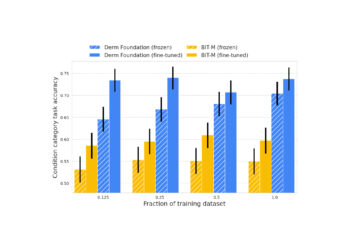Datacenter and ISP proxies are considered static by default because they originate from controlled infrastructures. Residential and mobile proxies are more prone to rotation due to ISP policies, but when configured for stickiness, they can function similarly to static proxies. However, when IP rotation is enabled, any proxy type can be used either rotating or static, depending on the provider’s setup.
This article explores why residential and mobile proxies are rotating by nature, why datacenter and ISP proxies are classified as static, and provides a list of the top static proxy service providers.
What is a static proxy?
A static proxy is a proxy server that assigns an IP address, known as sticky IP address or static IP proxy that remains the same over time.
While most static proxies are datacenter IP addresses and residential proxies are constantly changing by their nature, there are some exceptions. For example:
- Datacenter proxies can rotate: Static proxies are IP addresses generated by hosting companies or cloud servers that use the same IP address unless manually rotated. These proxies are not associated to individual user devices and don’t follow the same ISP-driven IP rotation as residential and mobile proxies. Some proxy providers offer static datacenter proxies that can be rotated with proxy rotators. For example, a provider may offer a pool of 1K static datacenter IPs that rotate with each connection request. The IPs are static, however the rotation functionality allows them to change dynamically.
- Residential proxies can be static (ISP): Residential proxies are generated by real residential devices connected to the internet via an ISP. Most Internet service providers (ISPs) assign dynamic IP addresses to users based on DHCP lease expiration (reassigning an IP periodically), router/modem reboot (assigning new IP on reconnection), and network load balancing (redistributing IPs among users).
What are the main types of static proxy servers?
- Datacenter proxies: These proxies use IP addresses provided from data centers rather than Internet Service Providers (ISPs). They are static by nature but some providers offer proxy rotation feature to simulate dynamic behavior.
- Residential proxies: Residential proxies are not truly static. Since they are rely on IPs assigned to real home users, most residential IPs are dynamic.
- ISP Proxies (static residential): Static residential proxy server offers residential IPs assigned by an Internet Service Provider (ISP) but hosted in a data center server. These proxies are static.
Why do residential proxies rotate?
Due to the fact that residential proxies are owned by actual devices, they are constantly rotating, and the IP pool is refreshed on a daily basis during this process. One of the key differences between a residential and a static proxy is that the static proxies don’t automatically alter its IP address. An example of this would be when a home user goes offline, which could occur when they turn off their router, disconnect from the network, or experience a session reset that is enforced by their Internet service provider. The Internet service provider returns the IP address to the pool of accessible IP addresses, which may be issued to another user at a later time.
How do proxy providers acquire static IPs?
- Peer-to-peer residential proxies: Many residential proxy networks rely on people willingly or unknowingly sharing their IP addresses in exchange for free services. For example, when a user connects to a free VPN app, they may unknowingly join a residential proxy network. Some proxy providers have integrated proxy-sharing functionality into browser extensions or web applications, such as free ad blockers.
- Software Development Kits (SDKs) for Mobile Apps: Some proxy providers collaborate with app developers to include a proxy-sharing SDK in their applications. For example, when a user installs an app that includes a proxy SDK, their device joins a residential proxy network. Free weather apps and mobile games frequently include proxy SDKs without informing users.
- Direct agreements with ISPs (static residential proxies): Most standard residential proxies use peer-to-peer (P2P) networks, in which end users unknowingly share their IP addresses. ISP proxies are direct agreements between ISPs to lease residential IP addresses.
What are the best static proxy providers in 2025?
Table notes:
Displays the starting monthly subscription price for datacenter proxies.
Summary of the top ISP proxy service providers:
Bright Data: Provides shared and dedicated static residential proxies and datacenter proxies that have static IP addresses. Typically Bright Data datacenter proxies are offered as dedicated static IPs; however, you also have the option of selecting shared IPs. Provider choices such as “Shared (Pay per Usage)” and “Shared (Pay per IP)” are available when using Internet service provider proxies. They can be rotated according to the requirements.
- Rotation options: Bright Data allows users to manually rotate through a collection of static IPs by using the ‘-ip’ or ‘-gip’ arguments to indicate which IP to use for each request. For further automated control, utilize the Bright Data Proxy Manager to create rules and automate the process of switching between your assigned static IPs.
Oxylabs: Dedicated ISP and datacenter proxies are the two types of static proxies that are offered by Oxylabs. The IP addresses are fixed and do not become different between sessions. ISP proxies can be either shared or dedicated. Self-service ISP Proxy IPs are shared between up to 3 users.
- Rotation options: For both proxy types, you can utilize port 8000 to automatically change IP addresses with each request. You can additionally rotate dedicated datacenter proxies within certain regions by including a country parameter in your credentials.
Smartproxy: Offers shared and dedicated static datacenter and ISP proxies.
- Rotation options: Both proxy server types have automated rotation choices; you can target specific ones or switch between them.
NetNut: Provides private residential static proxies, which can be rotated as needed. Static datacenter proxies are both shared and private, and they offer rotation options.
IPRoyal: Offers dedicated static datacenter and dedicated ISP proxies. There are no rotation options. Static proxies remain the same for the duration of the order.
How do static proxies differ from rotating proxies?
IP Address Source:
- Static proxies offer fixed IP addresses, sourced from data centers or ISPs, and remain unchanged for extended periods.
- Rotating proxies assign a new IP address with each request or at set intervals, ensuring dynamic identity changes.
Best Use Cases:
- Static proxies are ideal for applications requiring a stable connection, such as managing social media accounts.
- Rotating proxies excel at bypassing anti-scraping measures on websites that are difficult to crawl.






